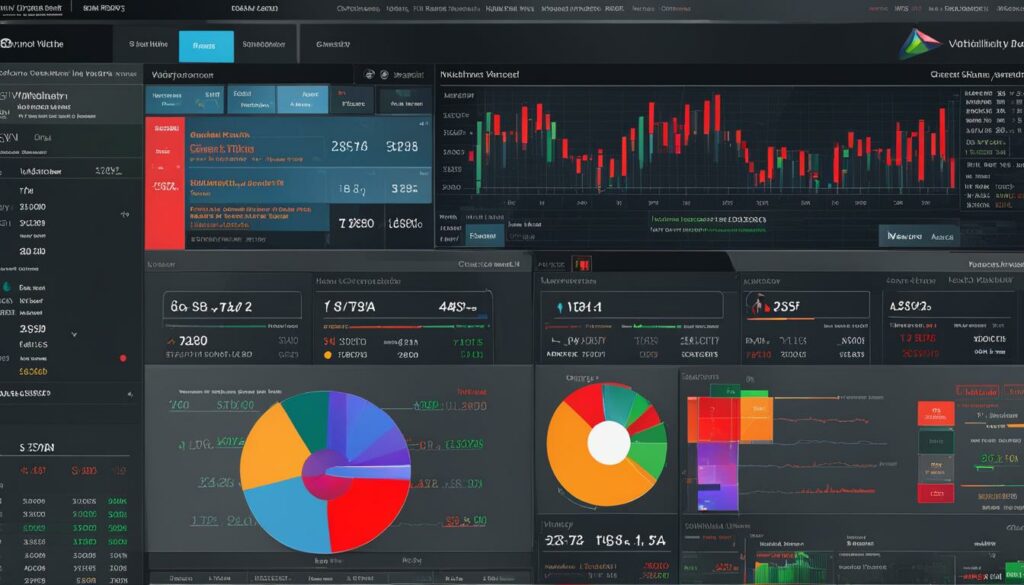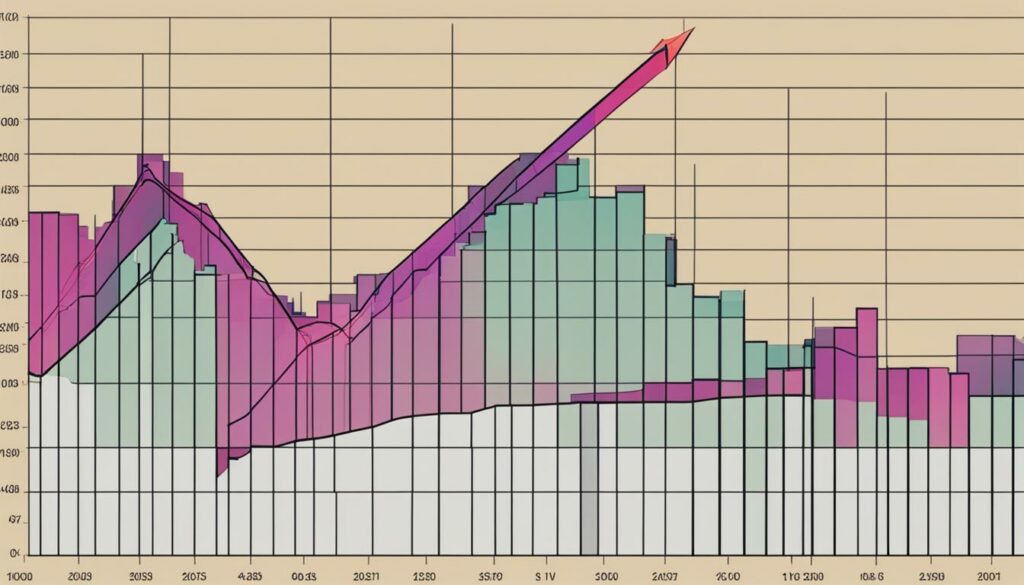High Implied Volatility for High Profits: Best Options Strategies To Capitalize On High IV Markets

Options trading strategies can be used to capitalize on high implied volatility in the market. Volatility is a key factor that affects the price of options, and traders can utilize various strategies to trade volatility and generate profits. Some common strategies include going long puts, shorting calls, shorting straddles or strangles, ratio writing, and iron condors. Understanding the factors that determine the price of an option, such as the current price of the underlying asset, the strike price, the type of option, time to expiration, risk-free interest rate, dividends, and volatility, is crucial for successful options trading in high volatility environments. Historical volatility and implied volatility play important roles in options pricing, and traders often analyze the volatility levels to make informed trading decisions. Additionally, vega, which measures an option’s price sensitivity to implied volatility, and relative volatility, which compares a stock’s current volatility to its historical volatility, are essential concepts for traders to understand.
Key Takeaways:
- Strategies such as going long puts, shorting calls, and utilizing short straddles or strangles can be used to profit from high implied volatility markets.
- Understanding the factors that influence options pricing, including historical and implied volatility, is crucial for successful options trading.
- Analyzing volatility levels and using concepts like vega and relative volatility can help traders make informed trading decisions.
- Risks involved in options trading include potential losses in volatile market conditions and unlimited losses in shorting calls.
- Proper risk management and strategy selection are key to maximizing returns in high implied volatility markets.
Please note that the image placement and alt attribute have been included according to the given instructions.
Historical Volatility and Implied Volatility
In options trading, understanding volatility is essential for making informed decisions. Volatility can be classified into two types: historical volatility and implied volatility. Historical volatility is a measure of the past performance of an underlying asset, while implied volatility is derived from the current prices of options.
“Historical volatility provides insight into how much the price of an asset has fluctuated in the past, which can help traders assess its future potential,” said our options trading expert. Implied volatility, on the other hand, reflects the market’s expectations for future volatility. It is considered more relevant for options pricing because it influences the price of options based on market sentiment and expectations.
To identify stocks with elevated volatility levels, traders often use high implied volatility screeners. These screeners scan the market to filter stocks that have experienced significant price swings and are likely to continue exhibiting high volatility. When implied volatility is high, option prices tend to increase, presenting opportunities for traders to profit from potential price movements in the underlying asset.
| Volatility | Definition |
|---|---|
| Historical Volatility | A measure of the past performance of an underlying asset |
| Implied Volatility | Derived from the current prices of options, reflects market expectations for future volatility |
Example: High Implied Volatility Screener Results
Let’s take a look at an example of a high implied volatility screener. Using the screener, traders can identify stocks that meet specific volatility criteria. In our example, the screener has filtered stocks with a minimum implied volatility of 50% over the past 30 days. The results display a list of stocks that have exhibited high levels of volatility.
“The high implied volatility screener has identified stocks such as ABC Company, XYZ Inc., and DEF Corporation as potential candidates for options trading strategies. These stocks have shown significant price movements, making them attractive opportunities for traders looking to capitalize on volatility,”
By utilizing historical and implied volatility measures, traders can gauge the potential risks and rewards associated with different options strategies. Whether they choose to go long puts, short calls, or employ other strategies, understanding volatility is crucial for successful options trading in high volatility markets.

Go Long Puts
One effective strategy to capitalize on high implied volatility is to go long puts. This strategy is suitable for traders who have a bearish outlook on a particular stock. By purchasing put options, traders have the opportunity to profit from any potential decline in the underlying stock’s price.
When implied volatility is high, the cost of put options tends to increase. This is because high implied volatility indicates a greater expectation of future price movements, which adds to the perceived value of the put options. While it may be more expensive to buy these options, if the stock price decreases significantly, the value of the put options will increase, potentially resulting in substantial profits for the trader.
It is important to note that options trading involves risks, and traders should carefully consider their risk tolerance and investment goals before implementing any strategy. Additionally, proper risk management techniques should be employed to protect against potential losses.
| Advantages of Going Long Puts | Disadvantages of Going Long Puts |
|---|---|
| Ability to profit from a decline in the underlying stock’s price | Premiums for put options may be expensive in high implied volatility environments |
| Potential for significant profits if the stock price decreases dramatically | Options trading involves risks, and potential losses should be carefully managed |
“Going long puts can be a viable strategy for traders who anticipate a bearish move in a particular stock. By carefully analyzing the implied volatility and underlying factors, traders can make informed decisions about whether to implement this options strategy.”
Key Points:
- Going long puts is a strategy used to capitalize on high implied volatility.
- This strategy is suitable for traders with a bearish outlook on a stock.
- Purchasing put options allows traders to profit from a potential decline in the stock’s price.
- The cost of put options increases as implied volatility rises.
- Proper risk management is crucial when implementing this strategy.

Short Calls
Shorting calls is a popular options trading strategy that can be particularly effective in high implied volatility environments. This strategy involves selling call options on a stock that you believe will either decline in price or remain stagnant. By selling calls, you collect premiums, which can result in profits if the stock price stays below the strike price of the options.
In high implied volatility markets, call options tend to have higher premiums due to the increased uncertainty and potential for larger price swings. This presents an opportunity for traders to generate more income from their short call positions. However, it is important to note that shorting calls involves unlimited risk, as the stock price can potentially rise significantly. It is crucial to have a risk management plan in place and closely monitor your positions to mitigate potential losses.
Shorting calls can be a useful strategy for traders who have a bearish or neutral outlook on a stock and want to generate income from the options market. It is important to carefully analyze the implied volatility levels, strike prices, and expiration dates before entering into short call positions to maximize your chances of success.

| Advantages of Short Calls | Disadvantages of Short Calls |
|---|---|
|
|
In conclusion, shorting calls can be an effective strategy for traders looking to capitalize on high implied volatility. By understanding the risks and implementing proper risk management techniques, traders can potentially profit from the options market in bearish or neutral market conditions.
Short Straddles or Strangles
Another strategy to consider when capitalizing on high implied volatility is employing short straddles or strangles. These strategies are particularly useful when the expectation is that the underlying stock or asset will experience minimal price movements or remain stable.
A short straddle strategy involves selling both a call and put option with the same strike price, while a short strangle involves selling a call and put option with different strike prices. Both strategies require the stock price to stay within a certain range to maximize profitability.
Traders can benefit from the decay of option premiums due to time passing and low price volatility. By collecting premiums from selling the options, traders can potentially profit if the stock price remains within the targeted range.

Key Points:
- Short straddles and short strangles are strategies used in high implied volatility environments.
- These strategies are suitable when minimal price movements or stability are expected in the underlying stock or asset.
- They involve selling call and put options, with the potential for collecting premiums and profiting from option decay.
- Traders must closely monitor the stock price to ensure it stays within the desired range for maximum profitability.
| Advantages | Disadvantages |
|---|---|
| Opportunity to collect premiums from selling options | Unlimited risk if the stock price moves significantly in either direction |
| Potential for profits when the stock price remains within the targeted range | Potential losses if the stock price moves outside the targeted range |
| Benefit from the decay of option premiums due to time passing and low price volatility |
“Short straddles and short strangles are effective strategies for traders who anticipate low price volatility. By selling both call and put options, traders can profit from option decay and the stock price staying within a certain range.”
Conclusion
Trading in high volatility markets can be lucrative if approached with the right strategies. By understanding the dynamics of options trading and the impact of volatility, traders can capitalize on high implied volatility to maximize their returns.
Among the various strategies available, going long puts can be a suitable approach for traders with a bearish outlook on a stock. By purchasing put options, traders can profit from potential declines in the underlying stock’s price. On the other hand, shorting calls can be an effective strategy for traders who are bearish or neutral on a stock, as it allows them to collect premiums and potentially profit if the stock price remains below the strike price.
Additionally, short straddles or strangles can be utilized to profit from low price volatility. These strategies are suitable when traders expect the underlying stock or asset to remain stable or experience minimal price movements within a certain range. Traders can benefit from the decay of option premiums over time and low price volatility.
When implementing any strategy, it’s important to consider factors such as historical and implied volatility, vega, and relative volatility. These metrics provide valuable insights into how options are priced and can help inform trading decisions. It’s also crucial to manage risks effectively, especially in strategies like shorting calls that carry unlimited loss potential.
By combining a strong understanding of options strategies, risk management, and market analysis, traders can navigate high volatility markets with confidence. Identifying high volatility stocks and selecting the best option strategy for high volatility can lead to profitable opportunities in the options market.







